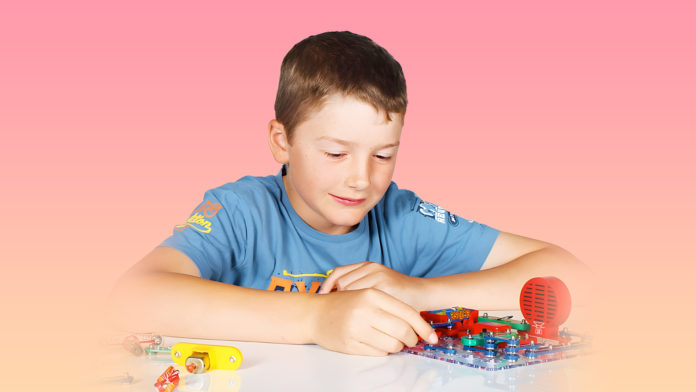For those of us who have been exposed to STEM for many years, or even for those who have been working with it for a little while, the idea of STEM seems pretty straightforward. We all know and understand what it is, its applications and its importance as we move into the future.
However, when you first say STEM to a primary school student, chances are that they’re probably not going to start jumping up and down and getting excited about all those cool employment prospects they’re opening up. They’ve probably never heard of it before, and at that stage, they probably don’t even care about opening up doors to more employment opportunities.
And if you think about it, a subject that stands for ‘Science, Technology, Engineering and Maths’ makes you start to wonder whether it was teachers or the geek squad that is running the STEM show.
This is just one of the reasons that student engagement is key when working with STEM. Teachers need to be able to show students that it isn’t just 4 nerd subjects someone slapped together to make things confusing, but rather that it encourages critical thinking and problem-solving skills, not to mention that it can also be super-fun!
But one of the biggest things standing in the way of all this may be something that we don’t think about all that much – students’ self-confidence. For students who don’t academically perform well in science, technology, engineering or maths on their own, their lack of self-confidence can stand in their way and lead them to make the early assumption that STEM is not a path they would like to go down. After all, for some students, a letter going home every 2 years from NAPLAN telling that they are well below the national average in, for example, maths can lead them to think that they’re hopeless and that STEM will be something that they’re no good at either.
I believe that, for this reason, there should be a focus in the classroom not only on the applications and uses of STEM but also on motivating and encouraging students to get involved and showing that they can achieve by giving them personal help and attention as well as projects that they will be able to do. There’s no point in teaching a student anything if they are constantly in the mindset that it is impossible for them.
However, the problem-solving nature of STEM means that students are going to constantly be faced with failures before they can succeed. They need to learn throughout this process that failing is always okay, as long as it is used as a tool to help them learn where they go wrong and to do even better each time.
In terms of engagement, hands-on activities are, I believe, the most effective in developing a growth mindset, communicating ideas, developing critical thinking skills and motivating students to learn and explore. One of the other great things about hands-on learning is that it turns behaviours linked with distraction, such as fidgeting, that can be a problem in theory-based subjects such as English or maths into a tool to help them learn and discover. This is really what STEM should be all about – encouraging students to solve problems using concepts from a combination of subjects and skill areas. It’s an opportunity for them to be able to get involved with their learning and see their results instantly in front of them.
Another great thing about this form of teaching is that it also allows the students with low self-confidence which I discussed earlier to feel like they are doing something, and can give them something to take home and show their parents on some occasions.
But the single most important thing when teaching STEM isn’t the resources you are using, those cool learning tools you bought online or even what topic you are looking at – it’s you, the teacher. As a student, I know that your passion and your enthusiasm for what you are teaching are going to be what engage students the most and drive them to learn.
If STEM were a delicious Sunday roast, then the secret seasoning on top would be your teacher’s enthusiasm. With seasoning, if it is positively putrid, it doesn’t matter what you put it on. No one will be interested in eating it. With teaching, if you aren’t enthusiastic, then how can you expect students to get excited and want to learn from you?
And fun fact: even if you’re teaching your least favourite topic in STEM, if you are trying to be super-enthusiastic about it, then you will find that you will enjoy it more yourself and it will become easier to teach.
Something that I believe goes alongside this need for enthusiasm is a personal interest in STEM on the teacher’s behalf. You don’t have to suddenly become a professor in astrophysics, but I think that it is important for a teacher to have some kind of active interest in a STEM area to be able to teach it properly.
This can mean going home and teaching yourself to code, subscribing to blogs to find out what excites and motivates kids today, learning how to build strong bridges or even building a tiny motorboat that floats in a pool. This is a fantastic excuse for spending your Saturday night searching through Pinterest.
All these things will not only increase your knowledge in STEM, making you instantly a more valuable teacher but will also help to fuel your enthusiasm for the subject.
Overall, I believe that improving student engagement is the single most important factor for effective teaching. Teachers need to understand the way students behave in the classroom in regards to STEM and also need to have strategies in place to address these.
